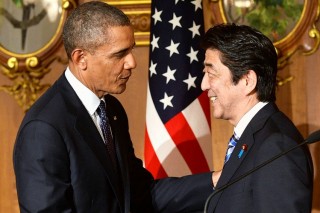Loading
Search
▼ Why US, Japan and Australia allying 'Iron Triangle'?
- Category:Other

CNTV
The G20 leaders recently met in Brisbane, Australia, to promote world economic recovery, growth and employment. On the sidelines of the summit, leaders of BRICS held an informal meeting, echoing the call of the G20, while leaders of the US, Japan and Australia talked about freedom of navigation and maritime disputes against China, clearly contradicting the theme of the G20. So why did the US, Japan and Australia discuss the security and defense at an international economic cooperation forum?
Firstly, the US, Japan and Australia seek to form an iron triangle to restrain China. After World War II, Australia and Japan formed military alliances with the US to act as south and north anchors of the US on the Pacific to restrain the 'proliferation of communism.' Japan blockaded La Perouse Strait, Tsugaru Strait and Tsushima Strait in cooperation with US to besiege the former Soviet Union; Australia provided 'Pine Gap' and 'Northwest Corner' to US to detect, survey and monitor the former Soviet Union’s missile-launching, space activity and warships.
Even after the Cold War, the US maintained and strengthened the military presence in Asia and Pacific by reviewing the Treaty of Security and Safeguard Between Japan and the United States and the military alliance with Australia. It has been using the strategic frontier base in Japan and the strategic rear base in Australia to form the direct and preventive restraint by its 100,000 stationary forces towards China.
In their recent tri-party meeting, they decided to solve dispute over sovereignty peacefully according to the international law and appeals for freedom of navigation and flight, all of which are against China.
Secondly, the US, Japan and Australia seek to form the iron triangle to transform from previous 'two-anchor strategy' to a 'three-nation alliance'. Although the US turned the two-anchor strategy to China after the Cold War, its wars in Afghanistan and Iraq after the 9/11 have consumed much of its finance and military force. Affected by the global financial crisis, the US has cut down the military expenditure to reduce its deficit. At the same time, equipment costs keep increasing. All these factors are hindering the research of US main weapons and the development of US army.
Grasping the strategic opportunity for rapid development, China has become the world’s second largest economy and made great breakthroughs in armament construction. If the US continues its two-anchor strategy with Japan and Australia as subordinates, to provide the frontier base and the logistics guarantee and the rear base and the technology and intelligence guarantee respectively, it will be difficult for the US army to maintain absolute control by operating independently.
The US promotion of the three-nation alliance is in line with its need to move the strategic focus eastwards and its re-balance policy towards Asia and the Pacific; it is also aimed at implementing the integrated air and naval battle in the West Pacific Ocean and the India Ocean for the purpose of combining the operation force, equipment technology and logistics guarantee guided by the US army to regain its strategic and operation advantage over China.
Thirdly, the US, Japan and Australia seek to form the iron triangle to realize military integration. The key to the three-nation alliance of the US, Japan and Australia is military integration, especially the weapon equipment integration. Once the three-nation alliance formed, the three parties will form four integration of maritime weapon for the convenience of operation planning, force combination, logistics guarantee, technology guarantee and joint operation.
The first is the integration of missile defense system. Navies of the US, Japan and Australia will possess Ticonderoga class cruiser, Arleigh Burke class destroyer, Atago and Kongo class destroyer, Hobart and Melbourne class destroyer in the future, all of which belong to the Zeus’s Shield series equipped with the strong active phased array radar, vertical launching device, remote air defense and missile defense missile for multiple targets. They may form dozens of maritime missile defense groups.
The second is the integration of large warships. Navies of the US, Japan and Australia will possess the largest quantity and the strongest aircraft carriers, amphibious assault ships, helicopter carriers and strategic projection ships, which will become the core equipment of the allied force to form a dozen of aircraft carrier groups and amphibious assault groups.
The third is the integration of advanced submarines. The US possesses Virginia class, Seawolf class and Los Angeles class nuclear-powered assault submarines. Japan possesses Soryu class and Oyashio class submarines, and Australia will also possess the high-performance submarine. These are the most advanced nuclear-powered assault submarines and regular submarines that may form a large quantity of underwater assault groups in deep-sea and offshore areas.
The fourth is the integration of the fourth generation of fighter. Other than more than 1,000 F-35 fighters to be equipped by the US, Japan and Australia also plan to procure dozens of F-35 to form the largest stealth fighter group to obtain and maintain the air and sea supremacy.
The iron triangle formed by the US, Japan and Australia will become a threat for China’s maritime security, especially challenging in issues relating to the East Sea, South Sea and the Taiwan Strait. China should deal with it positively to maintain its sovereignty and maritime advantages.
- November 25, 2014
- Comment (0)
- Trackback(0)

